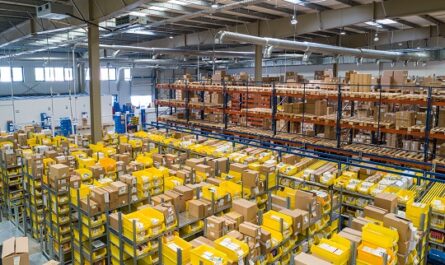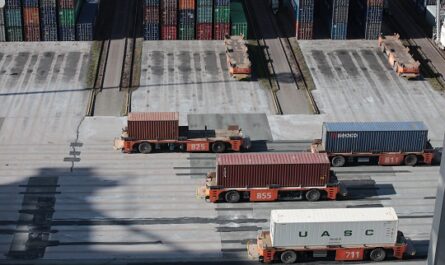In today’s competitive business landscape, you understand that effective supply chain management is crucial for your organization to stay ahead. One of the key performance indicators (KPIs) that significantly impacts your supply chain efficiency is costs.
Monitoring costs in your supply chain is essential for you to identify areas of improvement and optimize your operations.
In this blog post, we will explore two commonly used methods for cost monitoring: total supply chain cost and supply chain cost per unit. We will delve into the advantages of each method, their specific applications, and the valuable insights they provide to help you make informed decisions.
But before we delve deeper, make sure you have joined the scmguide telegram channel to receive notifications of the latest posts from this blog as well as more insights on supply chain management.
Table of Contents
Total Supply Chain Cost
When it comes to total supply chain cost, you understand that it refers to the cumulative expenses associated with your entire supply chain process, from procurement to delivery.
By monitoring total supply chain cost, you gain a holistic view of all the cost elements involved, allowing you to evaluate the overall financial performance of your supply chain.
Advantages of monitoring total supply chain cost
Here are some of the advantages of monitoring total supply chain cost.
Comprehensive Analysis
By considering all cost components, such as procurement, transportation, warehousing, and inventory holding costs, you gain a comprehensive understanding of your supply chain expenses.
This comprehensive analysis helps you identify cost drivers and potential areas for cost reduction. By knowing the specific areas where costs are incurred, you can take targeted actions to optimize those processes and reduce expenses.
Strategic Decision Making
Total supply chain cost analysis plays a crucial role in your strategic decision-making process. It allows you to assess the financial impact of different supply chain configurations or changes.

For example, if you are considering shifting to a new supplier or optimizing your distribution network, analyzing the total supply chain cost helps you determine the cost implications of these decisions.
This empowers you to make informed choices that align with your financial goals and overall supply chain strategy.
Performance Comparison
Comparing total supply chain costs across different periods or between multiple supply chains enables you to benchmark your performance.
This comparison helps you identify areas of improvement, optimize processes, and enhance cost efficiency. By evaluating your performance against industry standards or your own historical data, you can identify gaps and take proactive measures to bridge them.
You might also like:
- Profit Management Dilemma: Prioritizing Price Increases or Cost Savings?
- Develop Your Leadership: Unleash the Benefits of Delegation in Your Supply Chain Management
When do you need to monitor total supply chain cost?
Monitoring total supply chain cost proves particularly useful in the following scenarios.
Cost Reduction Initiatives
When your goal is to reduce overall supply chain expenses, analyzing the total cost provides a baseline for evaluating the effectiveness of cost-saving measures. It helps you track your progress towards cost reduction targets and identify areas where further improvements can be made.
Supplier Evaluation
By comparing total supply chain costs among different suppliers, you can assess their cost competitiveness and overall value proposition.
This evaluation enables you to make informed decisions when selecting or renegotiating contracts with suppliers. You can choose suppliers that offer the most cost-effective solutions while maintaining the desired level of quality and service.
Financial Reporting
Total supply chain cost serves as a key metric for financial reporting. It allows you to present a comprehensive view of your supply chain expenses to stakeholders, including investors, shareholders, and regulatory bodies.
This transparency in financial reporting demonstrates your commitment to cost management and enables stakeholders to assess the financial health and efficiency of your supply chain.

By monitoring total supply chain cost, you can gain valuable insights into your overall cost structure, make informed decisions, drive cost reduction initiatives, evaluate supplier performance, and communicate the financial performance of your supply chain to stakeholders effectively.
Supply Chain Cost per Unit
When it comes to monitoring supply chain cost per unit, you understand that this method focuses on the cost incurred in producing or delivering a single unit of a product.
By calculating the average cost per unit, you gain valuable insights into cost efficiencies and identify cost-saving opportunities at a granular level.
Advantages of monitoring supply chain cost per unit
Here are the advantages of monitoring supply chain cost per unit.
Granular Analysis
By evaluating costs at the unit level, you gain insights into the specific cost drivers associated with each product or SKU. This granular analysis helps you understand the factors contributing to the overall cost of each unit.
It facilitates targeted cost reduction efforts by allowing you to identify areas where costs can be optimized and streamlined. Additionally, it enables product-level profitability analysis, helping you identify which products are generating higher margins and which ones may need further evaluation.
Product Pricing
Understanding the supply chain cost per unit is crucial for setting appropriate pricing strategies. By factoring in the cost component at the individual product level, you ensure that your pricing decisions align with the cost realities.
This helps you strike a balance between profitability and competitiveness in the market. By accurately determining the cost per unit, you can avoid underpricing or overpricing your products, ultimately maximizing your profitability.
Performance Comparison
Comparing supply chain cost per unit across different products or product categories allows you to identify variations in cost efficiency and profitability.
This performance comparison helps you allocate your resources effectively, prioritize products with higher margins, and make informed decisions about resource allocation and product portfolio management.

By focusing on products that demonstrate better cost efficiency and profitability, you can optimize your resource allocation and enhance your overall supply chain performance.
You might also like:
- Finding the Right MOQ: How to Make Informed Decisions
- Overproduction Dilemma: Balancing Fixed and Additional Costs in Supply Chain
When do you need to monitor supply chain cost per unit
Monitoring supply chain cost per unit proves particularly useful in the following scenarios.
SKU Rationalization
When you have a wide range of products, analyzing the cost per unit helps you identify low-performing SKUs that may be contributing to higher overall costs. This information guides your decisions regarding product rationalization or redesign.
By identifying and potentially eliminating or redesigning underperforming SKUs, you can reduce costs and improve overall supply chain efficiency.
Cost Optimization
Supply chain cost per unit analysis aids in identifying processes or activities that drive higher costs per unit. By focusing on these areas, you can implement targeted cost optimization measures, such as process redesign or supplier renegotiation.
This analysis allows you to pinpoint specific cost drivers and take appropriate actions to streamline operations, negotiate better pricing with suppliers, or identify alternative cost-effective solutions.
Product Profitability Analysis
Calculating the supply chain cost per unit allows you to determine the profitability of individual products. This information is valuable for strategic product portfolio management and resource allocation. By understanding the profitability of each product, you can make informed decisions about resource allocation, marketing efforts, and product prioritization.
This analysis helps you focus on products that generate higher profits and allocate your resources accordingly, enhancing your overall supply chain profitability.
By monitoring supply chain cost per unit, you gain insights into specific cost drivers, optimize pricing strategies, compare performance across products, and make informed decisions about SKU rationalization, cost optimization, and product profitability.
This approach allows you to improve cost efficiency, enhance profitability, and drive overall supply chain success.
Conclusion
As you conclude this blog post, you recognize that monitoring costs is a critical aspect of your supply chain management. By utilizing the appropriate methods, you gain valuable insights that can optimize your operations and improve profitability.
The choice between monitoring total supply chain cost and supply chain cost per unit depends on your specific objectives and areas of focus within your organization.
Total supply chain cost analysis provides you with a comprehensive overview of all cost elements, which aids in strategic decision making, performance comparison, and cost reduction initiatives.
This method allows you to assess the overall financial performance of your supply chain and identify areas where cost-saving measures can be implemented.
On the other hand, supply chain cost per unit analysis enables you to evaluate costs at a granular level, specifically at the product level. This approach facilitates SKU rationalization, cost optimization, and product profitability analysis.
By understanding the specific cost drivers associated with each product or SKU, you can make targeted efforts to reduce costs, optimize pricing strategies, and prioritize products that generate higher margins.
By leveraging both total supply chain cost analysis and supply chain cost per unit analysis, you gain a holistic understanding of your supply chain costs.
This empowers you to make data-driven decisions that enhance efficiency, reduce expenses, and ultimately achieve a competitive advantage in the dynamic business landscape. By continuously monitoring costs and taking proactive actions, you can drive your supply chain towards success and maximize your overall profitability.
Hope it is useful!
Please also share this article with your colleagues so that they can benefit from it as well. Join our scmguide telegram channel to receive notifications of the latest posts from this blog and gain more insights into supply chain management. All articles on this blog are free for you to use for any purpose, including commercial, without the need for attribution.

 by
by 

